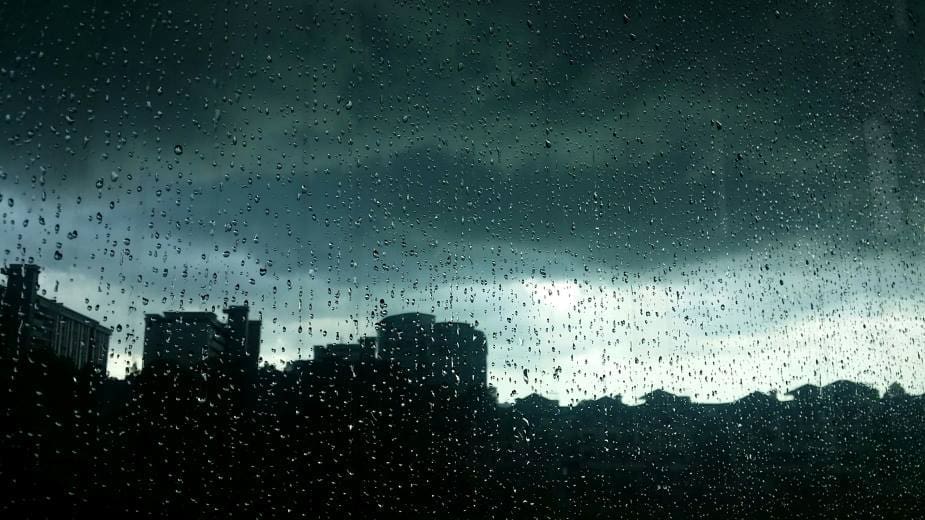Summary:
Sudden shifts between drought and deluge – known as precipitation whiplashes – could become more frequent by 2028 due to climate-driven changes in atmospheric patterns, according to a new study published in Nature Communications. Researchers at The Hong Kong University of Science and Technology (HKUST), led by Prof. Lu Mengqian and Dr. Cheng Tat-Fan, warn that the Madden-Julian Oscillation (MJO) – a key driver of tropical weather – will likely propagate faster in a warming climate. This acceleration increases the likelihood of extreme dry-wet swings on subseasonal timescales, complicating disaster response and straining global infrastructure.
Using 28 climate models from the Coupled Model Intercomparison Project Phase 6 (CMIP6), the team projects a 40% rise in fast-moving MJO events by the late 21st century. These events, which influence rainfall, cyclones, and monsoons worldwide, could become more common as early as 2028–2063 under current emissions trajectories. The study links this acceleration to intensified atmospheric stability and El Niño-like ocean warming.
While fast-propagating MJOs pose new risks, they also offer greater predictability for subseasonal weather forecasting – critical for early warnings. The findings feed into HKUST’s SEPRESS initiative and the meteoNEX forecasting system, aimed at bridging climate research with real-world disaster preparedness and sustainability planning.

HKUST study warns of accelerating climate threat: “Precipitation whiplashes” could strike as early as 2028
This research, led by Prof. LU Mengqian and Dr. CHENG Tat-Fan of HKUST’s Department of Civil and Environmental Engineering, attributes the escalating risk to climate-driven intensification of Madden-Julian Oscillation (MJO) events. This large-scale pattern of tropical intraseasonal climate variability is now propagating faster due to global warming.
The findings pave the way for improved subseasonal forecasts, i.e., two to six weeks in advance, enabling timely decision-making in disaster preparedness and management, and helping to enhance food and water security, energy management, and infrastructure resilience.
Understanding the Madden-Julian Oscillation (MJO)
The MJO is a planetary-scale atmospheric disturbance that moves eastward, dominating tropical intraseasonal variability over 30–90-day periods during boreal winter. Regarded as one of the most important sources of subseasonal predictability, it has far-flung impacts on global rainfall patterns, extreme weather conditions, tropical cyclone genesis, monsoons, and mid-latitude circulation patterns.

While existing literature generally concluded that anthropogenic greenhouse gas emissions can accelerate MJO propagation, the mechanism underlying such a relationship remains controversial, with various theories giving different estimates of the propagation speed.
Key findings from HKUST’s research
To resolve this puzzle, the HKUST-led research team conducted an analysis based on 28 coupled general circulation models (CGCMs) participating in the sixth phase of the Coupled Model Intercomparison Project (CMIP6). These models are the most advanced tools currently available for simulating the effects of rising greenhouse gas concentrations.
The team projected an alarming 40% increase in fast-propagating MJO events by the late 21st century compared to historical data (1979–2014).
More imminently, the study warns that an increased frequency of fast and “jumping” MJO events – where convection shifts abruptly – will become more frequent in the near-future (as early as 2028-2063). “Jumping” refers to a strong, westward-propagating equatorial Rossby wave that hinders MJO eastward propagation but initiates subsequent convection over the western Pacific Ocean.
Implications for global weather extremes
“Global precipitation whiplashes have become a growing concern, with a recent report revealing a 31–66% increase in their occurrence since the mid-20th century.” Dr. Cheng Tat-Fan, the first author of this work and a postdoctoral fellow at HKUST, explained the implications of the findings. “A notable example is the severe drought and wildfire that hit California in 2022, followed by record-breaking rainfall that resulted in floods and landslides. The acceleration of the MJO events will significantly shorten response times against compound hazards, catching societies off guard unless adaptation measures are in place.”
He further pointed out that as the climate warms, the increase in fast MJO events will heighten the risk of precipitation whiplashes. Such a trend will become apparent from as early as 2028 onwards, if the reality follows a business-as-usual scenario.
The supervisor of Dr. Cheng – Prof. Lu Mengqian, Director of HKUST’s Otto Poon Centre for Climate Resilience and Sustainability and Associate Professor at HKUST Department of Civil and Environmental Engineering, emphasized the study’s role in advancing seamless weather-to-climate predictions for sustainable natural and built environments.
“Future numerical models that accurately simulate diverse propagation behaviors of the MJO will enhance our ability to improve the forecast of extreme compound weather events 4-5 weeks in advance, which will significantly reduce casualties and damage to ecosystems and human societies,” she stated.
The research was conducted in collaboration with meteorologists and climate experts, Prof. Bin Wang (University of Hawaiʻi at Mānoa), Prof. Fei Liu (Sun Yat-Sen University), and Prof. Guosen Chen (Nanjing University of Information Science and Technology).
From Research to Real-World Impact
The present study contributed to meteoNEX, an award-winning prediction system that offers seamless weather-to-climate prediction services. This system has been acclaimed with a Gold Award at the 50th International Exhibition of Inventions Geneva. It also supports a HKUST-led, global transdisciplinary “research-to-operation” (R2O) initiative, the decade-long SEAmless PREdiction and Services for Sustainable Natural and Built Environments (SEPRESS) program, recently endorsed by the United Nations Educational, Scientific and Cultural Organization (UNESCO) as part of its International Decade of Sciences for Sustainable Development (IDSSD).
“Our ongoing efforts are focused on bolstering trust in science through reliable weather and subseasonal climate forecast while collaborating with global partners under the SEPRESS program to develop practical strategies against the imminent increase in precipitation whiplashes,” Prof. Lu added. “Our goal is to bridge scientific innovation with societal needs through equitable and transparent R2O strategies.”
Journal Reference:
Cheng, T.F., Wang, B., Liu, F. et al., ‘Shifts in MJO behavior enhance predictability of subseasonal precipitation whiplashes’, Nature Communications 16, 3978 (2025). DOI: 10.1038/s41467-025-58955-4
Article Source:
Press Release/Material by Hong Kong University of Science and Technology (HKUST)
Featured image credit: Elyse Chia | Unsplash




